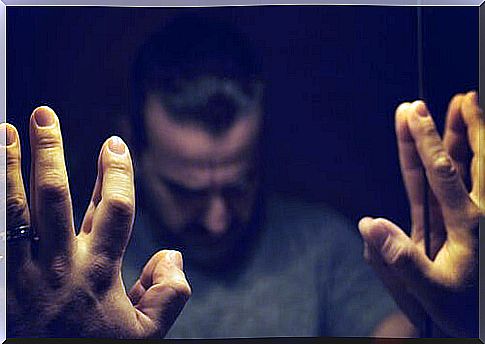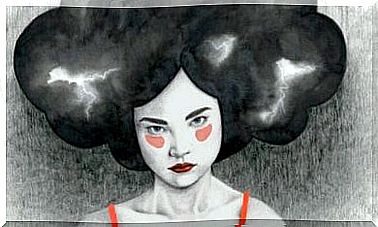What Are Benzodiazepines? Usage And Consequences

Benzodiazepines live on our bedside tables and in our handbags. They are pills for the pain of life, they guarantee that insomnia will not creep up on us and that the monster of fear will not show itself. They’re magically put together by those huge pharmaceutical companies, but they’re also incredibly addictive.
In the great movie ‘August: Osage County’, it is said that women generally solve their problems with pills, while men do with alcohol. In the film, Meryl Streep creates a powerful picture of what consistent, uncontrolled consumption of benzodiazepines can look like.
Sleeping pills are being pushed by doctors as an easy, fast and inexpensive way to alleviate the existential suffering of their patients.
The film paints a very grim, but true picture. An image we see all too often: people who have become addicted to a legal drug prescribed by their doctor. Patients who need higher doses every day to feel good. Or even old women who have been taking their ‘little’ sleeping pill for decades and now have a lower quality of life than they deserve.
There is a lot of darkness surrounding tranquilizers and their alleged purpose of making our lives more manageable when things go bad. Whether it concerns tangible or imaginary problems.
Nobody doubts their effectiveness in the short term, because they do work. But as we already know, anxiety and depression can last a very long time. That is where the risk lies. We become dependent there and we have to deal with side effects that we can no longer ignore.

What are Benzodiazepines?
Many people will not recognize the word “benzodiazepines.” But if we say Orfidal, Tranxilium, Lorazepam, Bromazepam, Valium or Xanax, it becomes a different story. A large part of the population has taken these drugs for one reason or another or at least has a family member, friend, or colleague who needs them every day.
All right, but… what are benzodiazepines really?
- Benzodiazepines have a calming effect (they slow down bodily functions).
- In addition, they are psychotropic drugs that affect the central nervous system. That is, they do more than just make us relax or calm down. They weaken our muscles, affect our ability to concentrate and can cause memory loss.
- They ensure that the substance GABA (Gamma-aminobutyric acid) is secreted in the brain.
- GABA is an inhibitory neurotransmitter in the brain made in the cerebellum, basal ganglia, and multiple parts of the spine. The function of GABA is to relax and decrease the activity of our neurons.
As an aside, it’s worth adding that benzodiazepines were introduced to the pharmaceutical market in the 1960s as a replacement for barbiturates. Since then, and with the start of the pharmaceutical company ROCHE, maker of the well-known Valium (diazepam), benzodiazepines have become the most widely consumed prescription “drugs” of all time.
Uses and Types of Benzodiazepines
We use benzodiazepines to treat panic or general anxiety disorders. We use them for insomnia, alcohol withdrawal, epilepsy, affective disorders, after surgery, and even to relieve the withdrawal symptoms of other drugs.
Also, as several studies have shown, including the one conducted at the University of San Jorge in Zaragoza (Spain), benzodiazepines are increasingly being prescribed in retirement homes.
This important fact made specialists wonder whether the clinical benefits of these drugs really outweigh their negative side effects.
It is worth pointing out that benzodiazepines are drugs that you can only take if your doctor prescribes them. And whether the drugs can be taken alongside antidepressants or antipsychotics, it will always be a specialist who prescribes them and controls the dose.

Types of Benzodiazepines
Benzodiazepines are classified according to their half-life (the time it takes for the body to halve the concentration of a substance in the body). Let’s take a closer look at the different types.
Extended duration of action, between 40 and 200 hours:
- Clobazam
- Clorazepate
- Clordiazepoxide (Librium)
- Diazepam (Valium)
- Flurazepam
- Medazepam
- Phenazepam
- Clotiazepam
- Prazepam
Medium duration of action, between 20 and 40 hours:
- clonazepam
- Bromazepam
- flunitrazepam
- Nitrazepam
Short duration of action, between 5 and 20 hours:
- alprazolam
- Lormetazepam
- Lorazepam
- Oxazepam
Reduced duration of action, between 1 and 5 hours:
- Brotizolam
- Midazolam
Effects associated with benzodiazepines
Benzodiazepines are effective. They always do what they promise, giving us undisturbed peace, alleviating that desperate anguish after a breakup, and even helping to make our workdays more manageable.
But everything in life has a price, and with benzodiazepines it’s sometimes like making a pact with the devil himself. We should never take these drugs for more than 4 or 6 weeks at a time. If we do, there is a chance that we will create a dependency.
However, life continues to hurt, problems continue to be a burden, insomnia continues to visit us, and fear continues to devour us. We ask our doctor for help and since he has nothing else to offer us, he gives in. And then the slow and destructive addiction begins.

Common physical side effects of benzodiazepine addiction include:
- Drowsiness, drowsiness
- Dizziness
- Confusion
- Loss of balance (especially in the elderly)
- Difficulty talking
- muscle weakness
- Constipation
- Nausea
- Dry mouth
- Blurry sight
Progressive effects on memory associated with benzodiazepine consumption
Benzodiazepines have a remarkable impact on our intellectual performance. In addition, prolonged use leads to difficulties in cognitive processes. It is difficult for us to concentrate, solve problems, derive information, formulate ideas…
Paradoxical Effects
A “paradoxical reaction to a drug” is when a reaction occurs that is the opposite of the intended reaction. There are many patients who, after months or even years of taking a type of benzodiazepine, begin to experience some or more of the following symptoms:
- Increase in anxiety
- Agitation
- Melancholy
- Depersonalization (feeling indifferent to their environment)
- Depression
- Derealization (feeling that their environment is not real)
- Hallucinations
- nightmares
- Personality changes
- Psychosis
- restlessness
- Suicidal behavior or suicidal thoughts
Benzodiazepines in People Over 60
People over the age of 60 who suffer from insomnia are often prescribed short-acting benzodiazepines by their doctor. This happens very often and the aim is to improve the quality of sleep, with a better quality of life as the end goal. However, there are a lot of studies that warn of the various risks associated with long-term consumption of these drugs in elderly patients:
- Changes in awareness and memory.
- Increased risk of falls and their consequences (such as hip fractures).
- Increased risk of car accidents.
- The use of benzodiazepines may also be an early indicator of the development of dementia.
All this brings us to a very clear conclusion to ponder. The irresponsible, long-term use of these drugs should be understood as a public health issue.
Laura and the story of her prescription addiction
Laura is 39 years old, has two young children, ages 3 and 8, and works for a public relations company. It’s a good job, with a lot of pressure, goals to achieve, and a company that has to go to market. There are days when it’s really hard to do it all: being a mother, being a successful creative person, all while struggling with anxiety.

A few weeks ago, she had to be hospitalized as a result of severe withdrawal symptoms. It all started with a buzzing in her ears. She couldn’t concentrate on anything but that persistent tinnitus. Then came the tingling in her arms and feet, the sensation of her mouth on fire, and that terrible sensitivity to light.
It changed her mood, all of a sudden. It was then that her children became afraid of her. It was then that the world started to turn and life suddenly became out of sync. Nothing fit in her mind and all she felt was the desire to hide somewhere where she could disappear, fade away, and dissolve into nothingness.
When she realized she was addicted to the benzodiazepines, she couldn’t believe it. It is extremely difficult to live with the fact that you have become addicted to medicines prescribed by your doctor. But the processes of anxiety and depression are long and our visit to our doctor only short. Under these circumstances, it can, at times, be complicated to handle the drugs properly.
Laura and her attempt to quit benzodiazepines
Laura tried to stop. However, she soon learned that was impossible because the effects are so devastating. Life is not a straight road, but a long, zigzagging struggle up the hill. Sometimes we need the help of those little pills. The little pills that take away our pain and put us to sleep.
But a benzodiazepine addiction is like a heroin addiction, and sometimes we have no option but to go to a clinic to get rid of the addiction.

Easy but dangerous, cheap but so expensive
We cannot put all the responsibility on our doctors. The organisation, the system and politics can also be blamed for a number of things. For example, the personal attention that a correct diagnosis and treatment require is far too little encouraged.
Also, other factors such as unemployment, bad jobs, the recession, poverty, loneliness, and poor emotional management can make things worse and cause us to turn to drugs.
Finally, we would like to remind people that benzodiazepines are only effective in the short term. In the long run, we need different strategies, different approaches to untying the knot in our lives: psychotherapy, personal willpower, and authentic, meaningful, and compassionate support from those around us. We can do it.
Bibliography
-Andrés-Trelles, F. (1993) Fármacos utilizados en la ansiedad: benzodiacepinas y otros ansiolíticos. Madrid: MacGraw Hill Interamericana.
-Hardman JG, Goodman LS, Gilman A. (1995) The Pharmacological Basis of Therapeutics. Pages 385-398. New York, MacGraw Hill.
-Robert Whitaker, (2010) Anatomy of an Epidemic. Crown Publishing Group.
-Sophie Billioti, Yola Moride , Thierry Ducruet (9-09-2014) Benzodiazepine use and risk of Alzheimer’s disease: case-control study. British Medical Journal, 349, pages 205-206
Eugene Rubin, Charles Zorumski, (2015) How Many People Take Benzodiazepines? Psychology Today https://www.psychologytoday.com/blog/demystifying-psychiatry/201505/how-many-people-take-benzodiazepines









